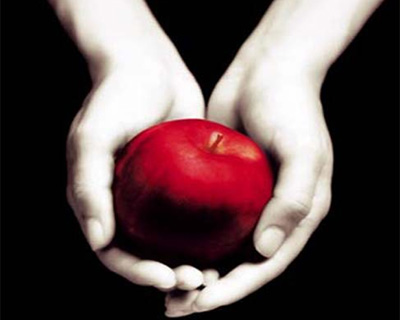
If you haven’t heard already, some perverted 45-year-old man in Norton Shores, Michigan not only attended a screening of The Twilight Saga: New Moon, but then persisted in harassing one of the 17-year-old girls sitting in the row behind him. After making inappropriate sexual remarks directed to the victim and her friends throughout the film, the assailant proceeded to bite the girl on the neck after the movie ended. As the victim described the event to ABC affiliate WZZM 13, “Every so often if I said something or my friend said something he would lean back and make a sexual comment that was very unnecessary and not needed.” Although the bite didn’t puncture the skin, the the police are still looking for the suspect and, as far as we know, he hasn’t been taken into custody.
This is not the first instance of weirdness or attempted violence associated with the Twilight franchise, or the vampire genre in general. In 2008, a Web site called Twilight Sucks began an anti-Twilight campaign by cataloguing known incidents of violence between “Twihards” and “antis” or, as they’re also known, “Twihaters.” The incidents range from assault with a baseball bat to attempted throat-slitting, and even include such imaginative tactics as throwing acid on another person and shooting at them with a flare gun. Since the film rights for the Twilight series were sold and pre-production began on the first movie, the number and type of incidents have only increased, along with the amount of national and international press that such events received.
But Twilight cannot be held solely responsible for violent, vampire-related attacks and even deaths. In 1996, a Florida couple fell victim to a group of teen vampire enthusiasts. According to reports, 17-year-old Chastity Keesee and 20-year-old Dana Cooper helped their “Vampire Clan” sire, 17-year-old Rod Ferrell, brutally murder the parents of another “Vampire Clan” member. In accordance with the cult’s rituals, which required members to drink each other’s blood, the victims were beaten to death with a crowbar.
Similarly, a sociologist professor at the University of Alberta named Stephen Kent who specializes in cults has seen his share of vampirist cults. As a children’s mental health worker years ago, Kent worked with a number of teenagers involved with a vampire cult in which members drank their own blood. “Most therapists working in the field would not come across this and wouldn’t even be aware of it,” Kent commented in The Globe and Mail, February 17, 2005. “Maybe they’ve heard of it in a case study at school, and even then it would be unusual. It’s not something we would teach at my school.” However, when asked to comment on a trial involving several teenagers who brutally murdered a 9-year-old girl in Toronto allegedly for vampiristic reasons, Kent told reporters,”It’s highly plausible for a number of reasons. Some people can feel tremendous eroticism through drawing blood and pain and death.”
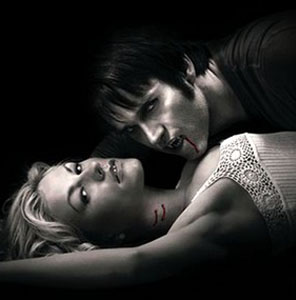
True Blood’s Sookie & Bill
The resurgence of an obsession with all things vampire over the past several years is undeniable and, interestingly enough, the trend seems to coincide with the popularity boom of the Twilight franchise. Of course, the proliferation of vampire-related materials is not limited to Twilight and includes various television series, films and a massive amount of literature, including the CW’s The Vampire Diaries, which quickly became the network’s highest-rated television series to date and has renewed interest in L.J. Smith’s novels by the same name, first published in the early 1990s; HBO’s True Blood, already slated for a third season, and the series which spawned it, Charlaine Harris’s Southern Vampire Mysteries; Richelle Mead’s new Vampire Academy novels; P.C. Cast’s House of the Night books; Ryan Mecum’s Vampire Haiku; the impending publication of Dracula The Un-Dead a sequel to Bram Stoker’s infamous Dracula novel and based on the author’s original sequel ideas and notes; the Chris Nahon-directed Japanese film Blood: The Last Vampire; Park Chan-wook’s Thirst; Universal Pictures’s Cirque du Freak: The Vampire’s Assistant; the soon-to-be-released vampire comedy Transylmania; and Lionsgate’s Willem Dafoe vampire film Daybreakers, scheduled for release in January 2010. And amidst all of this vampire mania, we have the November 2008 release of Twilight and the November 2009 release of The Twilight Saga: New Moon. One of the major differences between the Twilight franchise and many of the other vampire-related television series, films and literature listed above is the way that the franchise targets adolescents and the types of messages it conveys.
In an interview with News of the World, actor Robert Pattinson (the face of Edward Cullen, a surly and possessive vampire with whom the series’s protagonist, Bella Swan, is romantically involved) confessed that he often fears some of his most loyal fans. According to the actor, Twilight fans routinely approach Pattinson with open wounds and request that he suck their blood. Were it not for the number of blood-borne diseases in existence, such incidents might be chalked up to little more than an astounding degree of confusion between fantasy and reality or even a sick sense of humor; however, the threat that such events pose to actors like Pattinson are very real. During his interview with News of the World, Pattinson recalled a time when he was approached by a group of teenage girls covered in blood and scratches that they had just opened up on their necks. “They were like, ‘We did this for you,'” Pattinson says. “I didn’t know what to say — ‘Thank you, guys’?”
Given how often Pattinson bears witness to the weird ways of the Twilight– and vampire-obsessed, fear is a very real part of his public appearances and even, at times, his daily life. “People ask me to bite them and want to touch my hair,” said Pattinson, “I just don’t want someone to have a needle and give me HIV and I don’t want to get shot or stabbed.” While Pattinson’s fears might sound a bit far-fetched, one need only reference the fan incidents catalogued on the Twilight Sucks web site or peruse the newspaper articles related to various vampire-cult incidents to realize how real the threat is for many of the young male actors involved with Twilight and The Twilight Saga: New Moon.
Taking all of this into consideration makes it difficult to deny that the Twilight franchise is now the quintessential example of what happens when you combine raging teenage hormones, immaturity, and fad interest in vampire fetishes with a multi-million dollar film franchise starring attractive young actors and based on a young adult book series that was extremely popular even before its cinematic adaptation. The result is the appropriation and consolidation of various elements of goth, punk, and sadomasochistic subculture into an “alternative” lifestyle based on the modern perception of vampires in popular fiction and adopted almost exclusively by individuals too developmentally immature to really understand what it is that they are portraying to society.
Although it’s probably not harmful for teenagers who adopt the “vampire lifestyle” to dress in black, consume tomato soup and energy drinks designed to look like blood, and obsess over fictional characters from a popular young adult book series, this “vampire lifestyle” could, potentially, lead people to experiment with at-risk behaviors such as bloodletting, blood consumption, self-mutilation, assault, and even homicide. Take into consideration the risks associated with various paraphilias such as odaxelgina, hematolagina, and vampirism, each of which are related to vampires and/or the consumption of bodily fluids like blood and each of which is a recognized psychological or psychosexual condition. For those of you unfamiliar with these terms, here are a few abbreviated definitions:
- Paraphilia: Any sexual deviation that is considered abnormal in some societies or may prevent or hinder one’s ability to receive reciprocal love.
- Odaxelagnia: Sexual arousal gained from biting a partner or being bitten.
- Hematolagnia: Individuals sexually aroused by drinking human blood; also known as a “blood fetish.”
- Vampirism: A paraphilia involving the sexual attraction to vampires, sharp fangs, being bitten or biting, and/or blood; an umbrella term that includes many more specific fetishes like odaxelagnia and hematolagnia.
- Fetish: A form of sexual desire in which gratification depends to an abnormal degree on some object, item of clothing, part of the body, action, etc.
- Sadomasochism: The consensual use of domination and/or pain for sexual stimulation.
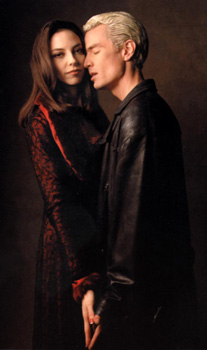
Buffy’s Drusilla & Spike
A popular argument of late points out the ongoing history of pop-vamp fetish, citing various vampire-related media such as Joss Whedon’s popular television series Buffy the Vampire Slayer, the Underworld film franchise, and even Bram Stoker’s Dracula in an effort to normalize the overwhelming attention that the Twilight series and related events currently receive and to establish the mass media as the party most responsible for its proliferation. While this may be true to a certain degree, the way that Stephenie Meyers’s Twilight series constructs its main characters also plays a very important role in creating and sustaining the vampire mania that has swept our nation. The series’s protagonist, Bella Swan, is designed as a character with whom adolescent and young adult readers — particularly females — can relate. Bella is a high school girl with self-esteem issues struggling to find her identity. Like many teenagers, Bella falls madly in love with one of her classmates — the epitome of “true love,” as every relationship seems to be to the teenagers involved — who happens to be a 100-year-old vampire. Edward Cullen is one of several young, male characters who are constructed as wildly emotional, thoroughly romantic and highly possessive sex objects. Although this characterization is not limited to the series’s vampires (encompassing a pack of werewolves as well), it nevertheless provides an underlying promise to its developmentally immature and idealistic readers: the promise of unconditional acceptance, love, and belonging. If that promise happens to involve masochistic behaviors, a romanticized obsession with blood, and preoccupation with the exploration of repressed (hetero)sexuality, then how can we expect adolescent girls and young adults dominated by their emotions, rather than logic or reasoning, to separate the healthy from the unhealthy and the dangerous from the harmless?
It’s true that the majority of young people involved with the “vampire lifestyle” are simply searching for a way to rebel from their parents and suburban lifestyles and have no interest in taking their new-found obsessions any farther than that. The vampire fetish proliferated by Twilight and other pop culture preys on adolescents’ and young adults’ loneliness, need to belong, sexual confusion, and family tensions. However, the possible ramifications of these fads and trends can, in some extreme cases, have serious and frightening consequences. While psychologically developed and mature adults that enjoy odaxelgina or hematolagina recognize the risks of engaging in such activities and can choose to take cautionary or preventative protective measures, teenagers may not developmentally be able to make such distinctions and decisions, for example.
Does that mean that parents should prevent their children from reading about or watching television and movies that involve vampires? Not necessarily. Should Americans have a mass Twilight book burning to prevent younger generations from being exposed to the messages that it conveys? Absolutely not. Do we need to boycott Hot Topic, Newbury Comics and other stores where the commericalization of Twilight runs rampant? Highly unnecessary. So what, then, is the purpose behind all of this discussion and conjecture, if not a call to arms against subject matter that threatens to pollute our youth? Aside from awareness and reaffirmation of the degree to which humans can be an extremely disturbing lot, the purpose behind discussions such as the one above is to raise the more serious questions: what in our culture causes adolescents to carry out such egregious acts of violence against one another in the name of fiction? Why now?
What do you think about the vampire fetishes that dominate popular culture right now? We would love to get your feedback on the issue, so please feel free to leave a comment or three!



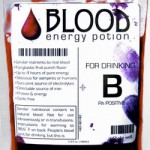
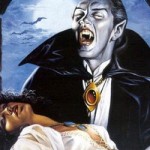

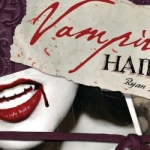
Hey there, nice read. These days it is very hard to come across passionate statements.
I’m a minister, andyes I’m ocncerned about this. Education is important, but there’s a componnent I see missing totally. When I was a kid, vmapire films scared the stuffingout me. I remember seeing Salem’s Lot for example and evn now the movie makes my skin crawl. Aside from the fact that kids are lacking certain training at home and the society seems to want to blur thelines of reality and evn the moral implications of such a lifestyle I find this a bit frightening that these actors are getting apporached for such careless and dangerous things. I just saw an article on MSN about a young man who’s been arrested for assault and breaking and entering to frankly get blood out of his victim. This guy was 19 and is legally considered an adult. He even claimed to be a 500 year old vampire. This is just as dangerous as the 1996 case you mention. I’d appreciate it if the writers, prpoducers, and directors would stick to the true portrayal of this stuff and quit tunring this into something that’s attractive. This is turning out to be a dangerous thing for some and this young man is being put through a psychiatirc evaluation. Just though you might want ot know.
Btw, thanks for the information, I will make sure to cite your article.